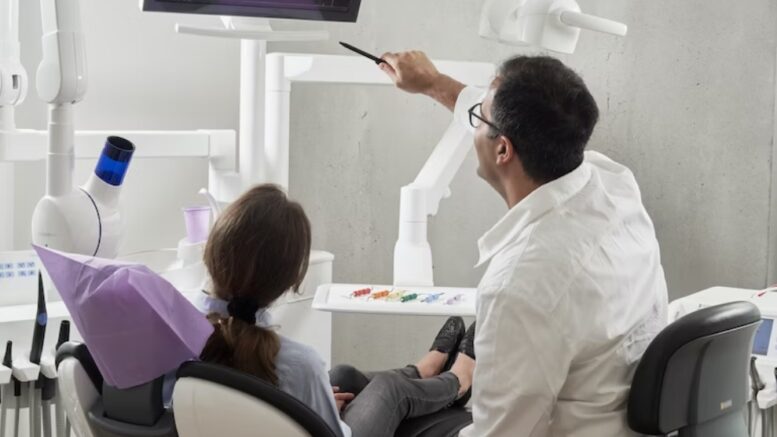In modern dentistry, many dental professionals provide high-quality services to ensure a perfect finish for their patients, emphasizing the importance of both functionality and aesthetics. Today, having healthy teeth is essential, but people also desire a brilliant smile that boosts their self-confidence. Fortunately, advancements in dental technology have provided numerous avenues for achieving beautiful teeth, as evidenced by the sophistication of tools and techniques available. Among these tools, the polisher stands out as a crucial instrument, providing the final touch to enhance patients’ smiles.
The Importance of Dental Aesthetics
There has been a noticeable increase in positive attitudes towards aesthetic dentistry in recent times. This trend is primarily driven by individuals seeking to improve the appearance of their smiles. Dental specialists are increasingly trained to address the rising demand for cosmetic dental procedures, addressing issues such as discoloration due to hormonal changes, misaligned teeth, or deteriorated enamel.
Evolution of Dental Polishers
Dental polishers serve as essential and practical tools used to achieve a superficial beauty shade on restorations such as fillings, crowns, and veneers. Over time, these polishers have evolved to incorporate advanced materials and technologies, resulting in superior outcomes. Today, polishers are available in various configurations, including different shapes, sizes, and levels of abrasiveness, catering to different materials and types of restorations. From the traditional rubber polishers to the modern diamond-impregnated ones, dentists now possess a diverse range of equipment to meet specific requirements.
Benefits of Modern Dental Polishers
Modern dental polishers offer a plethora of advantages, ensuring the attainment of desired aesthetic outcomes. These high-end products utilize specialized abrasive materials and superior crafting techniques, resulting in sharp contours and perfect polishing of dental fillings or crowns, seamlessly blending with the surrounding teeth. Furthermore, some dental polishers are designed to minimize heat generation and vibration during the polishing process, reducing the risk of compromising the restoration or causing discomfort to the patient. This minimizes trial and error, ensuring a comfortable and efficient polishing process for both the dentist and the patient.
Versatility and Efficiency
The versatility and efficiency of modern dental polishers are key factors driving their popularity. They can be used on various dental materials such as composite resin, porcelain, and metal alloy, making them indispensable tools for meeting a wide range of aesthetic needs. Moreover, newer dental polishing devices are built to be tough and durable, ensuring consistent results without frequent replacements. This saves time and resources while maintaining high-quality dental restorations.
Patient Satisfaction
Ultimately, achieving the perfect finishing touch in dental aesthetics goes beyond technical skills—it is also about patient satisfaction. Patients undergoing cosmetic dental treatments expect not only functional improvements but also a natural-looking and feeling smile. With the help of innovative dental polishers, dental professionals can not only meet but exceed patients’ expectations, enhancing both the quality of service and the performance of patients’ smiles. This fosters patient trust, leading to loyalty and positive word-of-mouth referrals, which are invaluable to every dental practice.
Conclusion
In conclusion, a modern dental polisher is indispensable for achieving the finest dentofacial finish in aesthetic dentistry. Its combination of high-tech precision, adaptability, and efficiency is a remarkable asset for dentists dedicated to delivering exceptional results. By embracing the latest advancements in dental innovation and employing relevant cutting-edge tools and techniques, dentists can elevate the standard of dental aesthetics, leaving patients with smiles they can truly be proud of.
Article edited and fact checked by our editorial team.
References:
- Chavali R, Lin CP, Lawson NC. Evaluation of Different Polishing Systems and Speeds for Dental Zirconia. J Prosthodont. 2017 Jul;26(5):410-418. doi: 10.1111/jopr.12396. Epub 2015 Nov 30.
- Sawai MA, Bhardwaj A, Jafri Z, Sultan N, Daing A. Tooth polishing: The current status. J Indian Soc Periodontol. 2015 Jul-Aug;19(4):375-80. doi: 10.4103/0972-124X.154170.
- Sang EJ, Song JS, Chung SH, Jin BH, Hyun HK. Influence of a new polishing system on changes in gloss and surface roughness of resin composites after polishing and brushing. Dent Mater J. 2021 May 29;40(3):727-735. doi: 10.4012/dmj.2020-207. Epub 2021 Mar 10.
